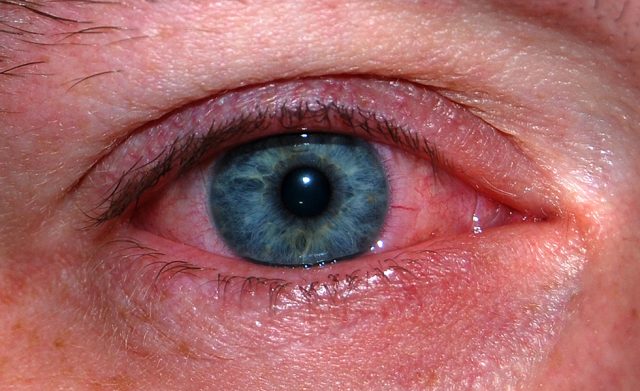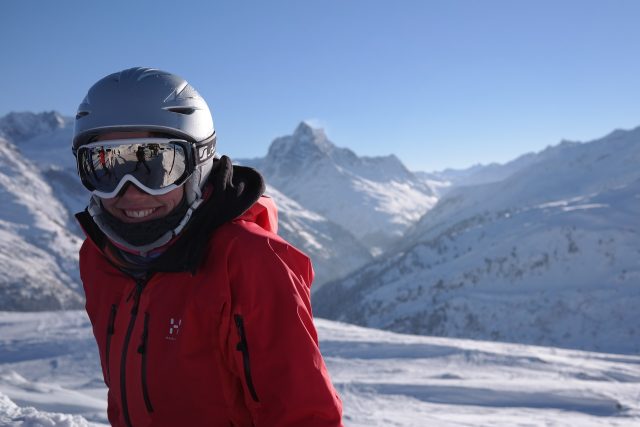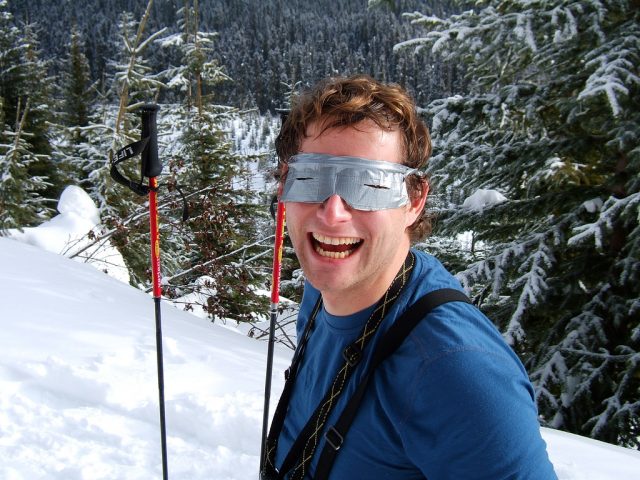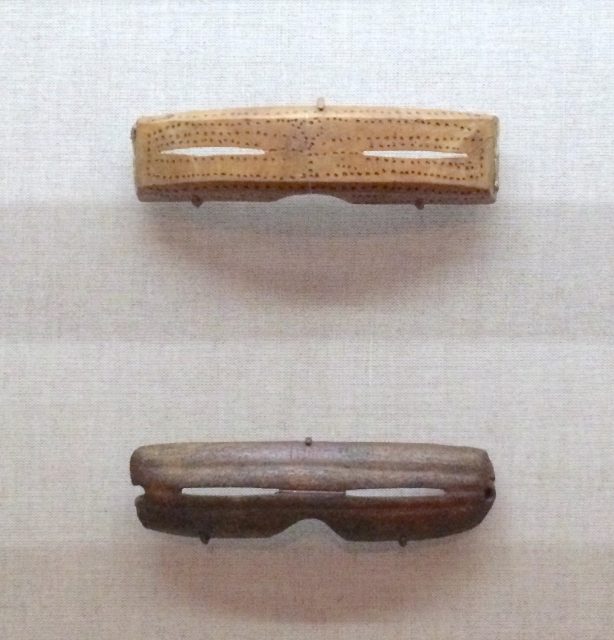Avoid snow blindness at all costs
If you expect to be outdoors in snowy conditions for any length of time, it is vital that you have high-quality eye protection. Exposure to too much sunlight reflected off the snow and ice can cause a very painful condition called photokeratitis or “snow blindness.” Anyone who spends time outdoors in snowy conditions without adequate eye protection is at risk of developing snow blindness.
The condition is caused when the cornea in the eye becomes over exposed to light and is therefore” burned” by the sun’s ultraviolet rays. Often, this damage is not noticed for several hours post exposure to the intense rays.

Snow goggles, glacier goggles or sunglasses with sufficient UV protection which also block rays from entering from the sides, are required. Snow blindness can occur not only when a person has no protection at all, but also if the protection is inadequate. If light enters in at the sides of the sunglasses or if they do not block out enough of the rays, this too can lead to the painful condition. It is particularly likely to occur when there is intense sun reflecting off the snow and ice in a high alpine environment or on a glacier.
Symptoms of photokeratitis

If you have been outside in these conditions and you notice your eyes looking bloodshot, watering more than usual, twitching uncontrollably, or you experience some pain, then you probably have photokeratitis. Your eyes will probably feel like they have sand or grit in them. They may become swollen. The inflammation itself is a cause of the pain. There may even be a temporary loss of vision. If there is extreme and repeated exposure, this could result in the permanent impairment or loss of vision.
If you are going to use sunglasses for snow/sun conditions, you must choose a pair with a high UV rating. In snow covered areas where the sun is also shining you would do well to choose wrap-around sunglasses which also block light from entering at the sides. Very dark does not mean a high UV protection so be sure to check this. The glass should be polarized. Mirror coated lenses are also a good choice.
If traveling in these conditions is going to be a regular thing that you’ll be doing, you may do better to purchase a pair of goggles which are specifically designed for the purpose. These have attachments on the sides and on the lower parts of the lenses to block the light out. They will usually be mirrored and polarized and come with very dark lenses.

Snow goggles or ski goggles are great for snowy conditions. These generally have a tight fit and offer full coverage for the eyes. Dark mirrored lenses offer the best shade, particularly where you anticipate the sun to shine all day, perhaps while you are on a glacier or snow field.
What to do
If you do develop snow blindness, you should immediately move out of the sunlight and the reflective snow. If you wear contact lenses, remove them and cover your eyes with a dark cloth. Make sure you stay in a darkened room for a while, if possible. Avoid rubbing your eyes. If the pain persists, it is advisable to get some medical attention. Eye drops may be prescribed, and these will have a painkilling and healing effect.
In the meantime, apply a cool compress which will help to soothe the pain. Healing could take up to several days, as long as you stay away from the original cause of the problem! Healing needs to happen away from any light, so your eyes will need to be covered by any available means (eye-pads, bandages, gauze or whatever you can find that will block out light).
Alternatives
Snow covered land can be spectacularly beautiful in winter and outdoor sports such as skiing, snowboarding, and winter hikes can be wonderful, but one has to take the necessary precautions. If in the unfortunate circumstance where you have mislaid or forgotten to pack your sunglasses you will want to create some kind of makeshift substitute, perhaps with the things that you find around you or the things that you have brought with you.

You could get the duct tape out, if this is something you have packed. If you use trekking poles when you go hiking, you could wind some around the poles, and you will always have some. Still, better to pack the goggles – but you should always pack some duct tape anyway. You can pack a small spool of tape in your kit. A pair of improvised snow goggles can be fashioned by cutting the tape into the shape of an eye mask. Tape two short lengths (six to eight inches) together back to back. Cut a shape out for the bridge of your nose in the center, then cut small slits to peer through. Cut a small hole on either side in which to thread some string or whatever you have to tie the “mask” around your head.
If you do not have duct tape with you, maybe you can locate some bark. Birch bark is good if you can find it, as this separates from the trunk in thin papery sheets. Cut this in the same way that you would the duct tape, with space for the bridge of your nose and with holes at each side for the string with which to tie it to your head.

Inuit style goggles work in a similar way. Native people have been making snow goggles in this way for centuries. These goggles get made from pieces of bone or antler somewhat the size and shape of sunglasses. They are carved to fit the face with a gap for the nose and slits to see through. Making goggles this way will require a good knife and some time and skill, though.
Whichever method you use the aim is to limit the amount of light that reaches your eyes. The goggles should fit quite close to your face to prevent light from reaching your eyes around the sides of the “mask”. The Inuit people also smear soot onto the inside to reduce reflection of light even more. Smearing charcoal or mud under your eyes can also contribute to reducing glare.
If you have any comments then please drop us a message on our Outdoor Revival Facebook page
If you have a good story to tell or blog let us know about it on our FB page, we’re also happy for article or review submissions, we’d love to hear from you.
We live in a beautiful world, get out there and enjoy it. Outdoor Revival – Reconnecting us all with the Outdoors.





